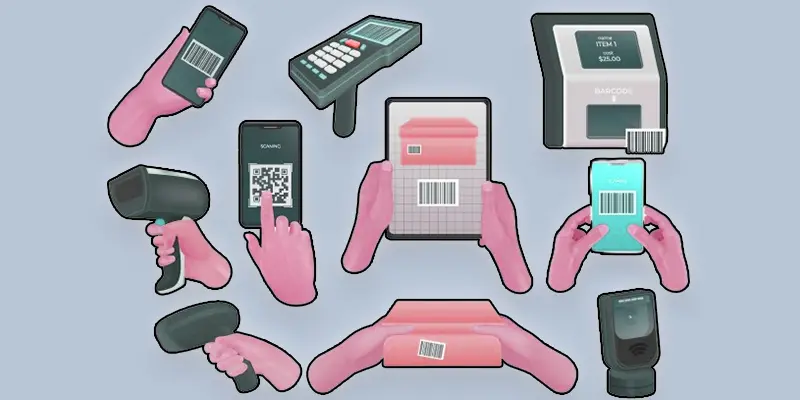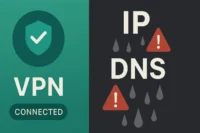Scanner Questions and Answers | Fast and Easy Guide
Published: 5 Jun 2024
Question and Answer of Scanner
Scanners are essential tools used to convert physical documents into digital formats, but how exactly do they work? Many users struggle with common scanner issues, such as connectivity problems or poor scan quality. Understanding scanner questions and answers can help troubleshoot these problems and improve your scanning experience. Whether you’re a beginner or looking for solutions, this guide will answer all your scanner-related questions.
Scanner Question and Answer | Common Issues Solved
Scanning questions and answers helps clarify common issues and provides solutions for effective scanning. Whether you’re a beginner or need troubleshooting tips, these answers guide you through the scanning process.
Learn the Basics of Scanner
| What does a scanner do? |
|---|
A. Prints documents B. Converts physical documents into digital form C. Edits digital photos D. Makes documents Answer: B |
| Which type of Scanner uses a flat, glass surface for scanning? |
|---|
A. Drum reader B. Portable Scanner C. Scanner with a flatbed D. Book Scanner Answer: C |

| What component captures light reflected from the document in a scanner? |
|---|
A. Printer Head B. Sensor C. Processor D. Feeder Answer: B |
| What is the measure of a scanner’s resolution? |
|---|
A. Megapixels B. Pages per minute C. Bytes per second D. Dots per pixel Answer: B |
| Which scanner type is best for high-volume document scanning? |
|---|
A. Flatbed Scanner B. Drum Scanner C. Sheet-fed Scanner D. 3D Scanner Answer: C |
Scanner Features
| What does DPI stand for? |
|---|
A. Digital Page Index B. Dots per Inch C. Data Processing Interface D. Document Protocol Interface Answer: B |
| What is color depth measured in? |
|---|
A. Inches B. Bits C. Pixels D. Pages Answer: B |
| Which feature allows scanning both sides of a document simultaneously? |
|---|
A. Duplex scanning B. Single-sided scanning C. OCR D. Batch scanning Answer: A |
| What does OCR stand for? |
|---|
A. Optical Character Recognition B. Optical Capture Resource C. Online Character Reader D. Output Character Renderer Answer: A |
| Which scanner type is commonly used for professional, high-resolution needs? |
|---|
A flatbed scanner B. Drum scanner C. Sheet-fed scanner D. Portable Scanner Answer: B |
Scanner Usage and Applications
| What file format is commonly used for scanned photos? |
|---|
A. DOCX B. JPEG C. XLSX D. TXT Answer: B |
| What resolution is generally suitable for scanning text documents? |
|---|
A. 50-100 DPI B. 150-200 DPI C. 200-300 DPI D. 600-1200 DPI Answer: C |
| How are scanned images saved for text recognition? |
|---|
A. PNG B. TIFF C. PDF D. BMP Answer: C |
| Which scanner feature automatically feeds pages? |
|---|
A. OCR B. Flatbed C. ADF (Automatic Document Feeder) D. Duplex Answer: C |
| Which scanner type is used for capturing the dimensions of objects? |
|---|
A. flatbed Scanner B. Scanner that feeds sheets C. Portable Scanner D. Scanner with three dimensions Answer: D |
Maintenance and Troubleshooting
| What should you use to clean the scanner glass? |
|---|
A. Abrasive cleaner B. Soft cloth and mild glass cleaner C. Sandpaper D. Vacuum cleaner Answer: B |
| Why might a scanned image be blurry? |
|---|
A. Low DPI setting B. Dirty scanner glass C. High color depth D. Incorrect file format Answer: B |
| How do you resolve a “Scanner not found” error? |
|---|
A. Clean the scanner glass B. Check connections and reinstall drivers C. Increase DPI D. Change color depth Answer: B |
| What causes lines on scanned images? |
|---|
A. Low resolution B. Interpolated resolution C. Dirt or debris on the scanner glass D. Incorrect color depth Answer: C |
| What does calibrating a scanner do? |
|---|
A. Adjusts document size B. Adjusts color accuracy and image quality C. Increases scanning speed D. Changes file format Answer: B |
Scanner’s Advanced Topics
| What is image stitching? |
|---|
A. Combining multiple scanned sections into one image B. Increasing scanning speed C. Reducing file size D. Changing image format Answer: A |
| What is scanning to the cloud? |
|---|
A. Storing scans on a local hard drive B. Sending scanned documents directly to cloud storage C. Printing scanned documents D. Sending scanned documents via email Answer: B |
| What is RFID scanning? |
|---|
A. Scanning paper documents B. Scanning digital images C. Using radio waves to capture data from tags D. Scanning photos Answer: C |
| How can AI improve scanning? |
|---|
A. By reducing scanning speed B. By improving OCR accuracy C. By increasing the file size D. By changing file formats Answer: B |
| What is a mobile scanner app? |
|---|
A. A device for scanning while moving B. An app that uses a smartphone camera for scanning C. A desktop scanner D. A 3D scanner Answer: B |
Scanning Software
| What is the purpose of scanner software? |
|---|
A. To edit digital photos B. To control the Scanner and manage scanned documents C. To print documents D. To browse the internet Answer: B |
| Which software can convert scanned documents into editable text? |
|---|
A. Photoshop B. OCR software C. Media player D. Spreadsheet Answer: B |
| What format is often used for archiving documents? |
|---|
A. JPEG B. PNG C. PDF/A D. MP3 Answer: C |
| What is a searchable PDF? |
|---|
A. A PDF with no text B. A PDF that can be searched for specific text C. A PDF that is encrypted D. A PDF that is compressed Answer: B |
| What is batch scanning? |
|---|
A. Scanning multiple documents in a single session B. Printing multiple documents C. Editing multiple images at once D. Sending documents via fax Answer: A |
Learn Industry-Specific Scanning

| How is scanning used in healthcare? |
|---|
A. For printing prescriptions B. For digitizing patient records C. For social media D. For video conferencing Answer: B |
| How is scanning used in education? |
|---|
A. For archiving student records and digitizing textbooks B. For broadcasting lectures C. For gaming D. For cafeteria management Answer: A |
| How is scanning used in legal settings? |
|---|
A. For filing taxes B. For scanning case files and legal documents C. For preparing meals D. For vehicle maintenance Answer: B |
| How is scanning used in finance? |
|---|
A. For digitizing financial records and invoices B. For coding websites C. For shipping packages D. For software development Answer: A |
| How is scanning used in government? |
|---|
A. For archiving public records B. For making laws C. For managing traffic D. For agriculture Answer: A |
Scanner Environmental and Cost Considerations
| Is scanning environmentally friendly? |
|---|
A. No, it increases paper use B. Yes, it reduces paper use C. It has no impact D. It depends on the Scanner Answer: B |
| What are the common costs associated with scanning? |
|---|
A. Purchase Cost and maintenance B. Monthly internet bill C. Cable TV subscription D. Movie tickets Answer: A |
| How can scanning save costs? |
|---|
A. By reducing physical storage needs B. By increasing paper use C. By requiring more printers D. By increasing electricity consumption Answer: A |
Scanner Security and Legal Aspects
| How do you ensure the security of scanned documents? |
|---|
A. Share them freely B. Use encryption and secure storage C. Leave them on the desk D. Post them on social media Answer: B |
| What legal aspect must be considered when scanning documents? |
|---|
A. Cost of paper B. Compliance with data protection laws C. Scanner brand D. Color of documents Answer: B |
| Can scanned documents be used as evidence in court? |
|---|
A. No B. Yes, if they meet certain criteria C. Only original documents D. Only handwritten documents Answer: B |
| What is a digital signature? |
|---|
A. A handwritten signature B. An electronic form of a signature C. A printed signature D. A verbal agreement Answer: B |
Scanner Emerging Technologies

| What does cloud-based scanning enable? |
|---|
A. Storing scans on a local drive B. Directly scanning to cloud services C. Printing scanned documents D. Faxing documents Answer: B |
| How does AI assist in scanning? |
|---|
A. By reducing file sizes B. By enhancing OCR and automating document categorization C. By increasing paper use D. By slowing down the process Answer: B |
| What is the benefit of a wireless scanner? |
|---|
A. Faster printing B. Flexibility and ease of access without cables C. Higher color depth D. Larger size Answer: B |
| What is the role of blockchain in scanning? |
|---|
A. Reducing image quality B. Ensuring document integrity and immutability C. Increasing scanning speed D. Decreasing file sizes Answer: B |
| What is an RFID tag used for? |
|---|
A. Printing documents B. Scanning barcodes C. Tracking and capturing data using radio waves D. Editing images Answer: C |
Scanner Practical Tips
| How do you choose the right Scanner? |
|---|
A. By considering needs like resolution, speed, and connectivity B. By choosing the cheapest option C. By selecting the largest model D. By ignoring reviews Answer: A |
| What should you do with scanned documents? |
|---|
A. Discard them immediately B. Store and organize them securely C. Leave them on the desk D. Post them on social media Answer: B |
| What is a common use for handheld scanners? |
|---|
A. Scanning large volumes of documents B. Portable scanning for small documents C. Scanning large posters D. Scanning film negatives Answer: B |
| How often should you clean a scanner? |
|---|
A. Daily B. Weekly C. Periodically, based on usage and if issues arise D. Never Answer: C |
| Which software feature helps manage repeated scanning tasks? |
|---|
A. Editing B. Scan profiles C. Printing D. Browsing Answer: B |
| What is the best practice for scanning fragile documents? |
|---|
A. Flatbed Scanner B. A drum scanner C. A sheet-fed scanner D. A mobile app or a combination of these Answer: B |
| Why is 300 DPI recommended for scanning photos? |
|---|
A. It saves storage space B. It provides good-quality prints C. It is the fastest option D. It is required for OCR Answer: B |
| What can cause a “Paper jam” error in a scanner? |
|---|
A. Low-resolution setting B. Dirty scanner glass C. Incorrectly loaded documents in the ADF D. High color depth Answer: C |
| What does a high color depth allow in scanning? |
|---|
A. Faster scanning speed B. Higher file compression C. A greater range of colors D. Lower file size Answer: C |
| What is the primary advantage of using a duplex scanner? |
|---|
A. Increased color depth B. Scanning both sides of a document simultaneously C. Faster single-side scanning D. Reduced power consumption Answer: B |
| Which format is best for editable scanned text? |
|---|
A. PNG B. JPEG C. PDF D. DOCX Answer: D |
| What does batch processing in scanning refer to? |
|---|
A. Editing scanned images B. Scanning multiple documents with the same settings C. Printing scanned documents D. Viewing scanned images Answer: B |
| Which scanner feature helps with high-volume scanning? |
|---|
A. Low resolution B. Interpolated resolution C. Automatic Document Feeder (ADF D. Low color depth Answer: C |
| What is the primary purpose of OCR technology? |
|---|
A. To edit digital images B. To convert scanned text into editable and searchable data C. To increase scanning speed D. To reduce file size Answer: B |
| What is the benefit of using cloud storage for scanned documents? |
|---|
A. Faster scanning speed B. Increased physical storage needs C. Easy access and collaboration D. Higher color depth Answer: C |
| What is a digital signature used for in scanned documents? |
|---|
A. Editing text B. Authenticating and ensuring the integrity of documents C. Reducing file size D. Increasing scanning speed Answer: B |
| Which device is specifically designed for scanning photographic negatives? |
|---|
A flatbed scanner B. Scanner that feeds sheets D. A film scanner C. A drum scanner Answer: D |
| What does “interpolated resolution” mean in scanning? |
|---|
A. The actual captured resolution B. Enhanced resolution achieved through software C. Low-resolution scanning D. Reduced color depth Answer: B |
| What should you do if the Scanner produces uneven colors? |
|---|
A. Ignore it B. Clean the scanner glass and calibrate the Scanner C. Increase the DPI D. Change the document Answer: B |
| What is the primary function of a 3D scanner? |
|---|
A. Printing documents B. Capturing the shape and dimensions of objects C. Scanning barcodes D. Editing photos Answer: B |
| What is the best file format for scanning high-quality images? |
|---|
A. JPEG B. BMP C. TIFF D. PDF Answer: C |
| How do you ensure the longevity of scanned documents? |
|---|
A. Store them on a local drive B. Use PDF/A format for archiving C. Keep them on a desk D. Print them Answer: B |
| What does TWAIN stand for? |
|---|
A. Technology Without An Interesting Name B. Technical Windows Application Interface C. Text Without Any Inclusions Necessary D. Transportable Windows API Network Answer: A |
Conclusion About Scan Question for Answer
These question-and-answer provide a comprehensive and detailed overview. Readers can explore the scanner’s functionalities, types, compatibility, and applications. These questions and answers will complete all your scanner-related queries.

- Be Respectful
- Stay Relevant
- Stay Positive
- True Feedback
- Encourage Discussion
- Avoid Spamming
- No Fake News
- Don't Copy-Paste
- No Personal Attacks



- Be Respectful
- Stay Relevant
- Stay Positive
- True Feedback
- Encourage Discussion
- Avoid Spamming
- No Fake News
- Don't Copy-Paste
- No Personal Attacks





